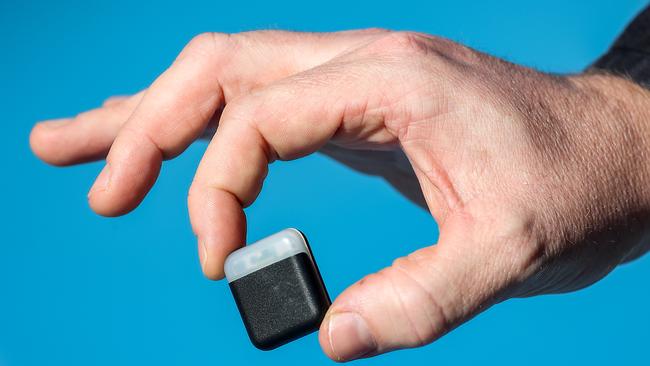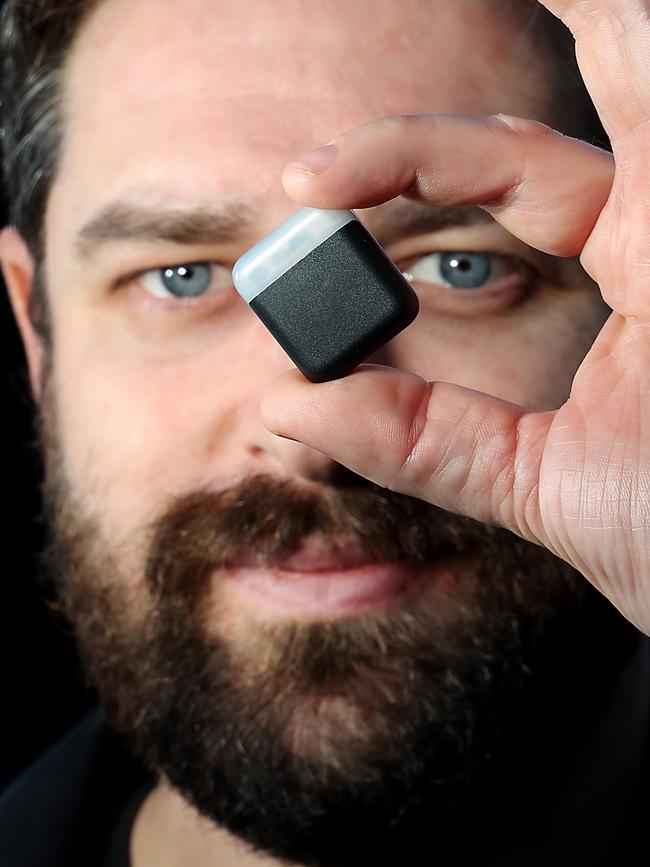Excessive light exposure at night likened to ‘having jet lag all the time’, Professor Sean Cain says
The next generation of wearable health tech – popularised by FitBits and Apple Watches – could measure light exposure instead of step counts or heart rates.

Victoria
Don't miss out on the headlines from Victoria. Followed categories will be added to My News.
The next generation of wearable health tech – popularised through the likes of FitBits and Apple Watches – could measure our exposure to light instead of step counts or heart rates.
Monash University researchers have developed a small badge – the size of a 20 cent coin – that can be clipped onto a shirt and measure our exposure to different types of light, from sunsets to screens.
Flinders University and Monash Adjunct Professor Sean Cain, who developed the gadget while at the latter, said light had a “fundamental” impact on our health, from influencing mental illness to diabetes.
“Our bodies are really made of trillions of these 24 hour clocks,” he said.
“There’s tissue throughout our brain and our body, they have evolved to do different things at different times of day … that is optimal for your health.
“But what they require for optimal organisation is a strong light, dark cycle.”

MiEye was initially invented for participants in the team’s own research projects, but their long-term goal is to bring it to consumers with an app that can put the findings in context.
While many people were aware of light’s role in keeping us awake, Professor Sean Cain said its impact went beyond sleep and likened excessive light exposure at night to “having jet lag all the time”.
“Last year in November, we published a paper in Nature mental health that shows healthy light patterns reduce your risk of developing virtually any mental health disorder,” he said.
He said another peer-reviewed paper by his team found “too much” indoor light at night “greatly” increased diabetes risk, with another upcoming paper – tracking 88,000 people over several years – linking healthy light exposure to longevity.
“If you get brighter light in the day, dimmer light at night, that is more regular, you live longer,” he said.
He said this “incredibly powerful” effect of light happened “below the level of consciousness”.
“So we’re using our technology to make that unconscious effect of light, conscious and trackable,” he said.

Monash’s SensiLab Director John McCormac said MiEye had multiple sensors that can pick up different frequencies of light, and a battery that needed charging about every 24 hours.
“There’s a tiny computer on the wearable device so it can log the information,” Professor McCormac said.
He said it can send the data to a phone app via Bluetooth, but has enough storage to hold the data itself too.
“The idea is you can wear it all day, you don’t have to have it connected to your phone all the time,” he said.
He said they chose a badge over a watch – to more accurately measure what our eyes see – but future advancements in wearable technology could bring new possibilities, such as a solar-powered “Band-Aid” sensor.
“There’s a lot of work being done at the moment with flexible wearable devices that are like adhesive layers that just sit on top of your skin,” he said.
“Further down the track, I’d imagine it would be possible to make something that’s even the potentially like the size of a bandaid, and it’s skin coloured so you don’t even noticed it.”



